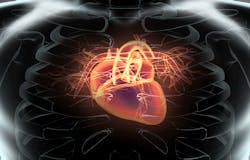World Heart Day and AEDs: Enabling Regular People to be Heroes for 20 Years
September 29 is World Heart Day, which is the World Heart Federation's (and the world's!) biggest platform for raising awareness about cardiovascular disease (CVD).
Royal Philips is celebrating two milestones of its own this month: the 20th anniversary of its first automated external defibrillator (AED) designed to be used by the general public and the 1.5 millionth sale of its HeartStart line of AEDs. To celebrate, the company is launching a campaign aimed at raising awareness around the prevalence of sudden cardiac arrest (SCA), with the goal of educating people about using AEDs and how they can save lives.
Despite the widespread availability of AEDs today, people are not always aware of AEDs, don’t know how easy they are to use and may still hesitate to intervene when someone is experiencing a SCA. Philips aims to showcase the ease of use and importance of AEDs, and empower laypeople to take action to help save a life.
“Today’s AEDs couldn’t be easier to use – you open the box and the device talks you through the steps – yet, despite this, people are still hesitant to intervene when they witness someone experiencing a sudden cardiac arrest episode,” said Dr. Joe Frassica, chief medical and innovation officer, Philips and chief science officer, Philips Research North America.
Sudden cardiac arrest is a leading cause of death and a major health problem in Europe and the United States. Approximately 420,000 people experience EMS-assessed out-of-hospital non-traumatic SCA each year in the United States and 275,000 in Europe. When bystanders intervene by giving cardiopulmonary resuscitation (CPR) and using AEDs, four out of 10 victims survive.
CPR may extend a victim’s life temporarily, but it alone cannot save the majority of SCA victims. Through this campaign, Philips is engaging with medical experts and survivors of cardiac arrest to move past one of the biggest barriers today: giving the average person the confidence to use an AED in an emergency.
“We need to ensure that people know what AEDs are, how to use them and understand that they can, in fact, be used by anyone,” added Frassica. “Those moments between someone’s heart stopping and when the emergency responders get to the scene are crucial. For every additional person equipped with the knowledge and confidence to intervene with an AED, there is potential for another life saved.”
Many bystanders mistakenly believe it is best to wait for professional help to arrive to the scene of a SCA. For the best chance of survival, an AED should be used within three to five minutes after collapse. Here are additional crucial facts about SCA:
For every minute that passes without CPR and defibrillation, an SCA victim's chance of survival decreases by as much as 10 percent.
- After 10 minutes without CPR or defebrillation, very few SCA victims survive.
- Being able to provide immediate treatment is crucial, as only 10.6 percent of SCA victims survive.
- On average, EMS teams in the U.S. take 6 to 12 minutes to arrive on the scene of a SCA.
- With bystander intervention and treatment with an AED, the survival percentage triples to 31.4 percent.
“Over eight years ago, I was sitting at lunch discussing senior prom plans with friends when I suddenly went unconscious, fell out of my seat and began to convulse,” said Lindsay Hayden, a survivor of cardiac arrest. “I was having a sudden cardiac arrest. I was just 17 at the time.”
A year and a half earlier, a classmate and close friend of Hayden had died of cardiac arrest, and his parents placed an AED in the school in his memory. That same AED, used by a classmate, helped save Hayden’s life.
“Sudden cardiac arrest doesn’t discriminate and it really can happen to anyone,” Hayden explained. “I was lucky that my classmate recognized that I was having a cardiac arrest, was trained in CPR and knew what an AED was. But luck shouldn’t be a vital component to survival.”
The First AED for Public Use
Philips launched its first public access AED, Forerunner by Heartstream, in 1996. Philips created AEDs for the layperson to use, giving an untrained responder the confidence to act quickly, decisively and lead the way to save a life.
Since this innovation and product name change to HeartStart, Philips’ AEDs were present on board 80 percent of major U.S. airlines, dozens of regional airlines and many of the largest international carriers. HeartStart also can be found in many of the busiest U.S. airports, one of the largest bus and coach producers in Europe, 43 professional sports team and 85 percent of Fortune 500 companies. AEDs are found in shopping centers, schools and even small workplaces.
For more information on Philips global efforts in supporting World Heart Day on Sept. 29, visit www.myheartisunique.com.
About the Author

Sandy Smith
Sandy Smith is the former content director of EHS Today, and is currently the EHSQ content & community lead at Intelex Technologies Inc. She has written about occupational safety and health and environmental issues since 1990.
